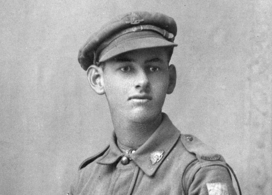Desert warfare in Sinai
While most allied troops were transferred to the Western Front in 1916, some, including most of the light horse regiments and the newly formed Imperial Camel Corps, remained in Egypt. Their first task was to protect the Suez Canal against attacks by Ottoman Turkish forces and pro-Turkish tribesmen. It was hot, thirsty, dirty work that placed an incredible strain on both men and horses.
🔍 Explore: Sinai Peninsula
-
Can you find the Suez Canal? Which two seas does it connect?
-
See 9 Fascinating Facts about the Suez Canal. When was it made, and why?
-
Why would Turkish and British forces have wanted control of the Suez Canal during the First World War? For more information see this resource on the Sinai Campaign.
The Anzac Mounted Division undertook various reconnaissance patrols across the Sinai Desert to identify Turkish positions and prevent Turkish troops from interfering with the British push eastwards. The environment was harsh and conditions challenging. Troops travelled long distances in both extreme cold and extreme heat, they slept in the open or in tents with little protection, and operations had to be planned to ensure that the men and their animals had access to water.
The flies are in millions they fly flop onto your food whether you like it or not, and as I am writing this note I have to keep them off with one hand and write with the other. Our horses suffer worse than we do. They have to stand in the sun and hot sand, for there is no shelter.
Trooper Albany Varney, 12th Light Horse Regiment, 22 May 1916
The Turkish forces launched their first attack on the Suez Canal on 3 February 1915, but were driven back into the desert. The rest of the year saw both sides occupied with the fighting on Gallipoli, but following the allied evacuation the Turkish troops were able to attack the canal once again in mid-July 1916, ending with the battle of Romani on 4–5 August. The combined British and Australian and New Zealand mounted troops made fierce counter-attacks, forcing the Turks to abandon their newly captured positions.
Australians also played a part at the battle of Magdhaba on 23 December 1916, before the allied occupation of Sinai was complete in February 1917. The allies continued to push German and Ottoman forces out of Egypt, leading to battles across the border in Palestine during 1917–18.
The Battle of Romani
It is here that the Light Horse are about to make a name for themselves. For I think it is only a matter of weeks now before [the Turkish army] has a try for the canal. We can see them drawing in closer, and so any night now they might try their luck.
Albany Varney, 12th Light Horse Regiment, 1 August 1916
In the early hours of 4 August 1916 Ottoman troops attacked positions held by Major General Harry Chauvel’s Anzac Mounted Division at Romani. This division included the 1st, 2nd, and 3rd Australian Light Horse Brigades, and the New Zealand Mounted Rifles Brigade, supported by the British.
At first only the 1st Light Horse Brigade was ready to meet the attack, but its troops were outnumbered and forced to fall back. As the day progressed the Ottomans faced mounting casualties and exhausted their supply of ammunition, while various allied mounted and infantry troops arrived to reinforce the Australian and New Zealand troops. Before dawn on 5 August the Anzac Mounted Division counter-attacked, with the 1st and 2nd Light Horse Brigades advancing on foot. The Turkish resistance collapsed, and their forces either withdrew, were killed, or were taken prisoner.
By the end of the battle allied casualties numbered approximately 1,100, while the Turkish casualties amounted to around 4,000, with another 4,000 taken prisoner.
George Lambert, The Charge of the 3rd Light Horse Brigade at The Nek, 7 August 1915, 1924
Case Study
Sidney Firth Lumb
From Gallipoli to Romani—Sid Lumb left school to join up in 1914 for a year, but ended up staying much longer, much to his father's dismay.
Questions and activities
Examine the two works of art above. The 3rd Light Horse Brigade fought in the battle of Romani, and almost one year earlier had fought in the battle of The Nek on Gallipoli.
-
What challenges would the Gallipoli and Sinai environments have arisen for the armies fighting in those areas? How would they have been similar/different?
-
Using the links below, investigate why the 3rd Light Horse Brigade did not have its horses while on Gallipoli.
-
History of the Australian Light Horse: The Mounted Soldiers of Australia
-
AWM Encyclopedia: Sandy (Major General Sir William Bridges' horse)
-
-
List some advantages and disadvantages of horses in battle.
-
Do Australians still use horses to ride in to battle today? What could be used instead?
-
Make a timeline identifying at least ten different battles in which Australians took part during the First World War. Where did these battles take place?
-
Water pipes and railways were built throughout the Sinai to get water to troops and horses. Can you think of any other ways water could be transported across the desert?


